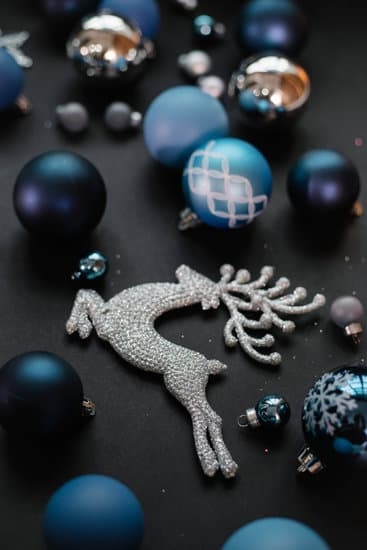The history of jewelry making is a tale as old as human civilization itself. From its humble beginnings in prehistoric times to the intricately crafted pieces of art seen today, jewelry has always held a special place in society. This article will delve into the rich and fascinating history of jewelry making, exploring its evolution through time and the diverse cultures that have contributed to its development.
The journey begins with the prehistoric origins of jewelry making, unearthing the earliest creations discovered by archaeologists. These early adornments were made from natural materials such as shells, bones, and stones, serving both decorative and symbolic purposes. As humans evolved and refined their craftsmanship skills, these early pieces laid the groundwork for the incredible array of jewelry designs that would emerge throughout history.
Ancient civilizations witnessed a surge in the development of ornamental jewelry, showcasing their cultural identity and social status through intricate designs and precious metals. From the Egyptians’ prized gold necklaces to the elaborate beaded creations of Mesopotamia, these early civilizations set the stage for innovative techniques and artistic expressions that would influence jewelry making for centuries to come.
As we delve further into history, we arrive at the Renaissance period where jewelry transformed into an art form in its own right. Inspired by classical Greek and Roman aesthetics, jewelers masterfully created intricate pieces adorned with vibrant gemstones. The Industrial Revolution marked yet another significant turning point in jewelry making, with mass production techniques allowing for more accessible yet less individually crafted pieces.
Throughout this article, we will explore each era’s unique characteristics and styles that defined them while highlighting notable moments when societal changes or artistic movements propelled innovation in jewelry design. From Art Nouveau’s nature-inspired motifs to contemporary sustainable approaches utilizing unconventional materials, every chapter in jewelry’s history has left a lasting impact on this timeless craft.
Stay tuned as we embark on an enlightening journey through time to uncover the fascinating evolution of jewelry making – a craft that transcends cultures, embodies artistic expression, and continues to captivate us with its enduring legacy.
Prehistoric Origins
The history of jewelry making dates back thousands of years, with evidence of early adornment found in prehistoric times. This section will explore the prehistoric origins of jewelry, uncovering the earliest creations made by our ancient ancestors.
Archaeological discoveries have revealed that early humans used a variety of materials to create their jewelry, including shells, animal bones, and teeth. These materials were often shaped and polished to create simple yet striking ornaments. These early pieces of jewelry served both decorative and symbolic purposes, representing personal identity and spiritual beliefs.
One notable example of prehistoric jewelry is the cave paintings found in Europe. These paintings depict early humans wearing bracelets, necklaces, and headdresses made from natural materials. The discovery of these cave paintings provides valuable insights into the importance of jewelry in early human societies and their desire to express themselves through ornamentation.
To further understand the development of jewelry making during this time period, archaeologists have also unearthed burial sites containing elaborate pieces of adornment. These findings suggest that jewelry played a significant role in rituals and ceremonies associated with death and the afterlife.
Through these archaeological discoveries, we can trace the origins of jewelry making back to our prehistoric ancestors. Their creativity and craftsmanship paved the way for future generations to explore new materials and techniques in creating beautiful pieces of wearable art.
| Prehistoric Jewelry Materials | Examples |
|---|---|
| Shells | – Shell beads |
| Animal Bones | -Bone pendants |
| Teeth | – Tooth necklaces |
Ancient Civilizations
The birth of ornamentation in ancient civilizations marked a significant turning point in the history of jewelry making. During this time, humans began to adorn themselves with various materials and designs, showcasing their status, beliefs, and cultural identity. Ancient civilizations such as Sumer, Egypt, and India played a crucial role in the development of jewelry as an art form.
Sumer: Innovators in Jewelry Making
One of the earliest civilizations known for their extraordinary advancements in jewelry making is Sumer. Located in present-day Iraq, the Sumerians were skilled craftsmen who pioneered many techniques that are still used today. They created intricate pieces using gold, silver, and precious gemstones like lapis lazuli.
The Sumerians were also one of the first cultures to introduce the concept of personal adornment beyond mere practicality. They believed that jewelry had protective and magical powers, leading them to create amulets and talismans adorned with various symbols.
Egypt: Symbolism and Extravagance
In ancient Egypt, jewelry held deep cultural and religious significance. Egyptians believed that wearing certain amulets or charms would provide protection and luck. Jewelry was not only restricted to nobles but also worn by commoners as a symbol of their social status.
Gold was highly valued due to its association with the gods Ra and Osiris. One of the most iconic examples of Egyptian jewelry is the elaborate burial ornaments found within pharaohs’ tombs, such as those belonging to King Tutankhamun. These exquisite pieces displayed an opulence unrivaled by any other civilization at that time.
India: Intricate Craftsmanship and Spiritual Significance
Another ancient civilization renowned for its rich tradition of jewelry making is India. Indian jewelry can be traced back thousands of years ago to the Indus Valley Civilization. Highly skilled artisans crafted intricate pieces using a wide range of materials, including gold, silver, precious gemstones, and even bones.
Jewelry in India not only served as a way to enhance one’s appearance but also had deep spiritual significance. Symbols such as lotus flowers, elephants, and deities were often incorporated into designs to convey auspicious meanings.
Mesopotamia to Egypt
Mesopotamia and Egypt hold a significant place in the history of jewelry making, as these ancient civilizations saw the birth of extravagant and luxurious ornaments fit for pharaohs and queens. The craftsmanship and artistry of these cultures paved the way for future generations to explore and push the boundaries of jewelry design.
Loading Jewels with Symbolism
During this period, jewelry was not just seen as a form of adornment; it also held great symbolic meaning. The elites wore these precious jewels not only to display their wealth but also to showcase their status and power. Jewelry became a way to communicate one’s social standing, beliefs, and affiliations.
In Mesopotamia, the civilization known for its advancements in architecture, mathematics, and written language, jewelry was primarily made from gold. Access to precious materials such as lapis lazuli imported from Afghanistan or carnelian from India demonstrated wealth and sophistication. The Babylonians were particularly skilled in goldsmithing techniques, creating intricate and detailed pieces featuring mythological symbols.
In ancient Egypt, jewelry played an important role in both religious rituals and everyday life. Egyptians believed that jewelry had protective qualities that could bring them luck or ward off evil spirits. Various gemstones such as turquoise, carnelian, and lapis lazuli were used alongside metals like gold and silver to create stunning pieces like necklaces, bracelets, earrings, headdresses, amulets, and rings.
Exquisite Craftsmanship
The jewelers of Mesopotamia and Egypt possessed remarkable skill in metallurgy and lapidary techniques. From casting metals using lost-wax methods to filigree work that involved soldering delicate wires together to create intricate patterns, artisans pushed the boundaries of their craft. They also mastered stone carving techniques to shape gemstones into various forms including scarabs or animal shapes.
The attention to detail showcased by these ancient civilizations is evident in jewelry artifacts found through archaeological excavations. Elaborate necklaces, intricately designed pendants, beaded collars, and even crowns were discovered among the royal tomb treasures, showcasing the exceptional craftsmanship of the time.
Whether made to protect and accompany pharaohs in the afterlife or to adorn noblewomen during their lifetime, the jewelry of Mesopotamia and Egypt remains a testament to the creativity and artistry of these ancient societies. The influence of their designs can still be seen today in contemporary jewelry that draws inspiration from their rich history.
The Renaissance
The Renaissance period marked a significant shift in the perception of jewelry, elevating it from mere adornment to an art form. During this time, the craftsmanship and design of jewelry reached new heights, and a greater emphasis was placed on the artistic expression and symbolism behind each piece.
One of the prominent features of Renaissance jewelry was its association with royalty and nobility. Wealthy patrons commissioned intricate pieces that showcased their social status and power. Jewelers began experimenting with new techniques such as enameling, gemstone cutting, and filigree work to create elaborate designs that reflected the opulence of the time.
A key figure who revolutionized jewelry design during this period was Benvenuto Cellini. His skillful craftsmanship and innovative designs pushed the boundaries of what was considered possible in jewelry making. Cellini’s creations included exquisite cameos, elegant necklaces, and delicate pendants that showcased his mastery over various materials such as gold, precious gemstones, and pearls.
Another notable aspect of Renaissance jewelry was its incorporation of symbolism. Inspired by classical mythology and art, jewelers created pieces with hidden meanings or allegorical elements. For example, a necklace featuring a snake biting its own tail symbolized eternity or the cycle of life.
The Renaissance era not only transformed jewelry into an art form but also set the stage for future innovations in design, craftsmanship, and storytelling within the realm of adornment. The influence of this period can still be seen in contemporary jewelry today, where designers continue to push boundaries while paying homage to the rich history that has shaped this timeless craft.
The Industrial Revolution
During the Industrial Revolution, which took place from the late 18th century to the early 19th century, jewelry making underwent a significant transformation. This period marked a shift from handcrafted techniques to mass production methods. The advent of new machinery and technologies revolutionized the industry, allowing for an increased production rate and accessibility of jewelry.
One of the key developments during this time was the invention of machines that could perform tasks previously done by hand. For example, the steam-powered rolling mill enabled jewelers to quickly and efficiently shape metal sheets without having to rely on manual labor. Additionally, advancements in metal casting techniques made it possible to reproduce intricate designs more easily and at a faster pace than ever before.
The Industrial Revolution also saw the rise of new materials in jewelry making. With the discovery and extraction of precious metals like gold and silver becoming more efficient, these materials became more attainable for a wider range of people. Furthermore, the invention of electroplating allowed for inexpensive base metals to be coated with a thin layer of gold or silver, creating an affordable alternative for those who couldn’t afford pure precious metals.
Art Nouveau
The Art Nouveau movement was a significant period in the history of jewelry design that took place during the late 19th and early 20th centuries. This artistic movement revolutionized the way jewelry was created and consumed, transforming it into a true art form.
During this time, jewelry designers rejected the traditional high-precision techniques of the Industrial Revolution era and sought inspiration from nature, mythology, and the human form. Ornate, intricate designs that featured fluid lines, delicate curves, and motifs such as flowers, insects, and female figures became hallmarks of Art Nouveau jewelry.
One of the prominent characteristics of Art Nouveau jewelry was its use of unconventional materials. Artists began incorporating enamels, glass, ivory, horn, opals, moonstones, and other semi-precious stones into their creations. These exotic materials added an ethereal quality to the pieces and allowed for endless possibilities in terms of color combinations and textures.
Art Nouveau jewelry also embraced a sense of uniqueness and individuality. Many pieces were handcrafted by skilled artisans who paid meticulous attention to detail. The delicate craftsmanship involved intricate metalwork, filigree patterns, and exquisite stone settings.
As a result of its innovative designs and unconventional approach to materials and craftsmanship, Art Nouveau jewelry remains highly sought after by collectors today. Its influence can be seen in contemporary jewelry design as well.
In summary, Art Nouveau revolutionized jewelry design by redefining it as an art form rather than merely a means of adornment. The movement’s emphasis on nature-inspired motifs, unconventional materials, intricate craftsmanship,and individuality continue to inspire modern jewelry designs today.
Jewelry in the Modern Era
In the modern era, jewelry making has seen tremendous advancements in materials and design. Jewelry designers have embraced innovative materials and techniques to create unique pieces that reflect the spirit of their time. This section explores some of the key developments in contemporary jewelry making.
One significant change in modern jewelry making is the use of unconventional materials. While precious metals and gemstones still hold a certain allure, designers have expanded their horizons by incorporating alternative materials such as glass, plastic, wood, and even recycled objects into their creations. These non-traditional materials offer endless possibilities for experimentation and creativity, resulting in bold and distinctive jewelry designs.
Another notable trend in modern jewelry making is the emphasis on expressing personal ideas and narratives through wearable art. Contemporary jewelers are increasingly using their craft to convey messages, tell stories, and provoke thought. Each piece becomes a canvas for individual expression, allowing wearers to make a personal statement about their values or experiences.
Technology has also played a significant role in pushing the boundaries of jewelry making. With advances in computer-aided design (CAD) software and 3D printing technology, designers can turn their ideas into reality more easily than ever before. This technological integration has allowed for greater precision and intricacy in jewelry design while enabling mass production on a scale previously unimaginable.
| Advancements | Description |
|---|---|
| Unconventional Materials | Incorporation of glass, plastic, wood, recycled objects |
| Expression and Narrative | Jewelry as a means to convey personal ideas or stories |
| Technological Integration | Use of CAD software and 3D printing for precision and mass production |
Sustainable Jewelry
In recent years, there has been a growing demand for sustainable and ethical products in many industries, including the realm of jewelry making. Sustainable jewelry refers to pieces that prioritize environmental responsibility, social justice, and conscious consumption. This contemporary approach to jewelry making has gained traction as consumers become more aware of the environmental and social impact of traditional practices.
One key aspect of sustainable jewelry is the use of ethically sourced materials. This means using materials that are obtained in a responsible and environmentally-friendly manner, such as recycled metals or gemstones that have been mined under fair labor conditions. For example, some jewelers now source their diamonds from mines that adhere to strict regulations regarding workers’ rights and ecological sustainability.
Additionally, sustainable jewelry often incorporates alternative materials in its designs. This can include using recycled glass beads, reclaimed wood, or even innovative materials like lab-grown diamonds or upcycled plastics. By utilizing these alternative materials, jewelry designers can reduce their reliance on traditional mining practices and contribute to a more circular economy.
Furthermore, sustainable jewelry brands prioritize transparency throughout their supply chains. They meticulously trace the origins of their materials and ensure they come from reliable sources that operate with integrity. This commitment to transparency not only builds trust with consumers but also addresses concerns about unethical practices prevalent in the industry.
As sustainability becomes an increasingly important value for consumers worldwide, the demand for sustainable jewelry is likely to continue its upwards trend. The contemporary approach of sustainable jewelry not only aligns with modern values but also provides consumers with a way to express themselves through beautiful adornments while making a positive impact on the planet and society at large.
Conclusion
Throughout history, jewelry making has evolved and transformed into a true art form. From its prehistoric origins to the modern era, this timeless craft has captivated civilizations and cultures around the world. Reflecting on the enduring legacy of jewelry making, it is clear that this art form holds a special place in human history.
From the earliest creations unearthed in prehistoric times to the birth of ornamentation in ancient civilizations, jewelry has served as a symbol of status, spirituality, and personal expression. Throughout the ages, from Mesopotamia to Egypt and beyond, we see how jewelry became an integral part of royal regalia and an inseparable inheritance for pharaohs and queens. It is undeniable that these pieces not only showcased impressive craftsmanship but also represented power and prestige.
The Renaissance marked a turning point in the history of jewelry making as it shifted from being simply an accessory to becoming an esteemed art form. During this period, artists began incorporating intricate details and symbolism into their designs, emphasizing aesthetics above all else. The Industrial Revolution further transformed the craft by introducing new machinery and techniques that allowed for mass production. This led to increased accessibility and affordability of jewelry for people across various social classes.
In more recent times, movements such as Art Nouveau have redefined jewelry design by embracing bold ideas and innovative materials. Furthermore, there has been a growing emphasis on sustainability in contemporary jewelry making. Jewelry designers are now exploring eco-friendly materials and ethical sourcing practices to create pieces that not only showcase their creativity but also align with societal values.
The enduring legacy of jewelry making lies in its ability to transcend time and embody the spirit of different eras. Whether as a symbol of power in ancient civilizations or as a statement piece in modern times, jewelry continues to be cherished and admired.
As we reflect on its rich history, it becomes evident that jewelry making is much more than just creating wearable adornments – it is an art form that allows us to express our individuality and connects us with the past.

Welcome to my jewelry blog! My name is Sarah and I am the owner of this blog.
I love making jewelry and sharing my creations with others.
So whether you’re someone who loves wearing jewelry yourself or simply enjoys learning about it, be sure to check out my blog for insightful posts on everything related to this exciting topic!





